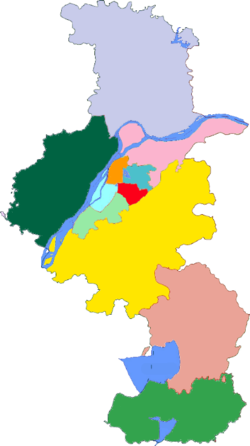| UNESCO World Heritage Site | |
|---|---|
 Ming Lou, the main building of Ming Xiaoling Mausoleum | |
| Official name | Xiaoling Tomb including area from Treasure Mound to Shenlieshan Stele, including Plum Blossom Hill, and Big Golden Gate |
| Location | Xuanwu District, Nanjing, Jiangsu, China |
| Part of | Imperial Tombs of the Ming and Qing Dynasties |
| Criteria | Cultural: (i)(ii)(iii)(iv)(vi) |
| Reference | 1004ter-005 |
| Inscription | 2000 (24th Session) |
| Extensions | 2003, 2004 |
| Area | 116 ha (290 acres) |
| Coordinates | 32°03′30″N 118°50′23″E / 32.058271°N 118.839631°E |
The Ming Xiaoling (Chinese: 明孝陵; pinyin: Míng Xiào Líng; lit. 'Filial mausoleum of Ming') is the mausoleum of the Hongwu Emperor, the founder of the Ming dynasty. It lies at the southern foot of Purple Mountain, located east of the historical centre of Nanjing. Legend says that in order to prevent robbery of the tomb, 13 identical processions of funeral troops started from 13 city gates to obscure the real burying site.[1]
The construction of the mausoleum began during the Hongwu Emperor's life in 1381 and ended in 1405, during the reign of his son the Yongle Emperor, with a huge expenditure of resources involving 100,000 labourers. The original wall of the mausoleum was more than 22.5 kilometres long. The mausoleum was built under heavy guard of 5,000 troops.

